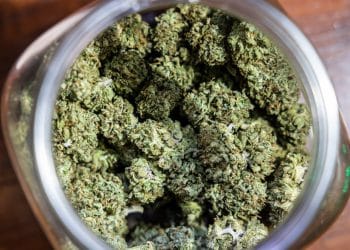Here you can find a selection of cannabis scientific studies published in the latest month. Each article is correlated with a short abstract describing the purpose of the study and the main research findings.
A great cannabis culture comes from great and peer reviewed sources! For this reason we believe in the importance of consulting reliable sources. Whether you are interested in a particular article don’t hesitate to read the full piece for more information.
Cannabis and Health ⎯ Best new findings
Cannabidiol Exposure During Rat Pregnancy Leads to Labyrinth-Specific Vascular Defects in the Placenta and Reduced Fetal Growth
Using histological and transcriptomic analysis of embryonic day 19.5 of rat placentas the possible cannabidiol (CBD) induced fetal growth restriction was evaluated. Limited studies have been made on this non-intoxicating cannabinoid regarding this topic.
From this research came out a compromised angiogenesis and blood vessel formation with an overall downregulation of biological processes induced by CBD treatment during pregnancy. Moreover CBD-exposed placentas displayed a modified expression of glucose transporters in addition to altered cell populations within the placenta.
All together these results show that CBD-exposed placenta could result in reduced fetal growth, because of impaired expression of nutrient transporters and changes at the level of vascular formation.
Source: https://doi.org/10.1089/can.2023.0166
GPR55 is expressed in glutamate neurons and functionally modulates drug taking and seeking in rats and mice
G protein-coupled receptor 55 (GPR55) has been thought to be a putative cannabinoid receptor. In particular CB1/CB2 receptors and GPR55 play opposing roles in mediating classical cannabinoid effects. The research group proposed that the GPR55 agonists might hold therapeutic potential in reducing cannabinoid actions mediated by activation of CB1 and CB2 receptors or in reducing action produced by other substances of abuse.
Nevertheless more studies have to be performed in order to understand GPR55 functional role in cannabinoid modulation or substance use disorder. In this research it is reported that GPR55 are mainly expressed in glutamate neurons in the brain and its activation reduces self-administration of cocaine and nicotine in rats and mice. GPR55 activation could modulate drug-seeking behavior and it could be a possible target for treating substance use disorders.
Source: https://doi.org/10.1038/s41398-024-02820-3
Effects of cannabidiol in post-stroke mood disorders in neonatal rats
In this study it was shown that cannabidiol (CBD) reduced middle cerebral artery occlusion (MCAO)-induced brain damage and improved motor performance in neonatal rats manifesting post-stroke mood disorders (PSMD). CBD administration didn’t prevent the development of depressive-like behavior but reduced long-term hyperactivity, normalizing the functioning of dopamine receptors in the brain. CBD was highlighted as a possible neuroprotective agent and possible treatment for neonatal stroke.
Source: https://doi.org/10.1038/s41390-024-03077-8
Does medicinal cannabis affect depression, anxiety, and stress in people with cancer? A systematic review and meta-analysis of intervention studies
From this systematic review came out that there is insufficient evidence to determine whether medicinal cannabis could be used as therapeutic intervention for mood disorders such as anxiety, depression and stress of people with active cancer. Further studies should be done in order to assess if high doses of tetrahydrocannabinol (THC) could be used as treatment to improve and maintain appetite and the impact of these high dosages on the anxiety level of patients.
This review highlights the need for more precise tests in order to collect reliable data on the effects of medicinal cannabis on mental health of people with cancer.
Source: https://doi.org/10.1016/j.maturitas.2024.107941
Cannabis and Technology ⎯ Best new findings
Cannabinoids: A new natural agent to control postharvest decay development
This research focuses on the capability of non-psychotropic cannabinoids such as cannabidiol (CBD) and cannabigerol (CBG) to inhibit fungal growth and fruit colonization. This study investigates the mode of action of these cannabinoids against mold spread and shows how they are capable to influence fungal cell wall composition as well as hyperpolarization of fungal mitochondria membrane affecting the accumulation of reactive oxygen species thus the fungal respiration.
These findings suggest the potential of CBD and CBG as novel postharvest and eco-friendly treatment to control fungal development and reduce food loss. Moreover the potential use of these phytocannabinoids could replace chemically hazardous fungicides that often are necessary to preserve foodstuffs.
Source: https://doi.org/10.1016/j.postharvbio.2024.112842
Laboratory Assessment of Molluscicidal Activities of Cannabis sativa, Acacia nilotica, and Tinospora cordifolia Against Snail Host of Fasciola spp.
This comparative study investigates and compares the molluscicidal activity of few plant species including cannabis sativa. The plant extract showed significant activity mainly against young snails. According to this study β-caryophyllene, gallic acid, and berberine were characterized and identified as active molluscicidal components. These compounds were found also in cannabis extracts and showed the same Rf value of the other plant extracts on thin layer chromatography.
Source: https://doi.org/10.1089/vbz.2023.0073
The effect of chelating agents on the Zn-phytoextraction potential of hemp and soil microbial activity
This study presents the effects of the application of biodegradable chelating agents such as citric acid and nitrilotriacetic acid to zinc (Zn) -contaminated soil to improve hemp uptake of heavy metals. Two hemp varieties, Monoica and Felina 32, have been tested in a controlled environment in order to compare their uptake and simultaneously check the soil microbial activity.
This piece highlights that the Felina 32 variety is more suitable for Zn-phytoextraction from contaminated soil because of its higher tolerance, higher biomass production and Zn accumulation capacity. The application of nitrilotriacetic acid showed a threefold increased accumulation of Zn in the above-ground Felina 32 plant parts.
Source: https://doi.org/10.1186/s40538-024-00544-6
Veterinary Use of Cannabis — Best Latest Findings
Cannabidiol Plus Krill Oil Supplementation Improves Chronic Stifle Osteoarthritis in Dogs: A Double-Blind Randomized Controlled Trial
In this study the clinical efficacy of cannabidiol (CBD) + krill oil supplemented biscuit against osteoarthritis in dogs was evaluated. This common orthopedic disorder is characterized by chronic pain and inflammation in dogs and cats. 30 dogs with stifle osteoarthritis were randomized and divided into placebo, krill oil and CBD+krill oil groups.
The Canine Brief Pain Inventory questionnaire was used to evaluate the efficacy of each treatment against pain. From this study came out that CBD + krill oil supplements are safe against canine OA. CBD can effectively reduce pain and inflammation.
Source: http://dx.doi.org/10.2139/ssrn.4724452
Potential to use cannabinoids as adjunct therapy for dexamethasone: An in vitros tudy with canine peripheral blood mononuclear cells
The goal of this study is to evaluate the potential of cannabinoids such as cannabidiol (CBD) and tetrahydrocannabinol (THC) as adjunct therapy for dexamethasone treatment. In particular the immune function was assessed in canine peripheral blood mononuclear cells after dexamethasone treatment with and without both single cannabinoids CBD and THC and their combination.
It partially proves that CBD or THC could be used in vivo to reduce the administered doses of dexamethasone and to avoid unwanted side effects linked to this drug. In fact, the combination of dexamethasone with cannabinoids produces more enhanced suppression of cytokine production.
Source: https://doi.org/10.1016/j.vetimm.2024.110727
Pharmacokinetic of two oral doses of a 1:20 THC:CBD Cannabis herbal extract in cats
In this research the pharmacokinetics (PK) of two oral doses of cannabis extracts (1:20 THC:CBD) was determined in 12 healthy cats. The assessment was made for single-dose (PK) after oral administration of both low and high dosages.
The blood and plasma samples were analyzed for CBD, THC and metabolites content using liquid chromatography paired with mass spectrometry (LC-MS/MS). Even if cats didn’t display adverse effects the plasma concentrations were highly variable but lower than in dogs receiving the same dose and formulation.
Moreover it was noticed that the oral administration of oil based cannabis extract could be particularly challenging in some cats.
Source: 10.3389/fvets.2024.1352495












